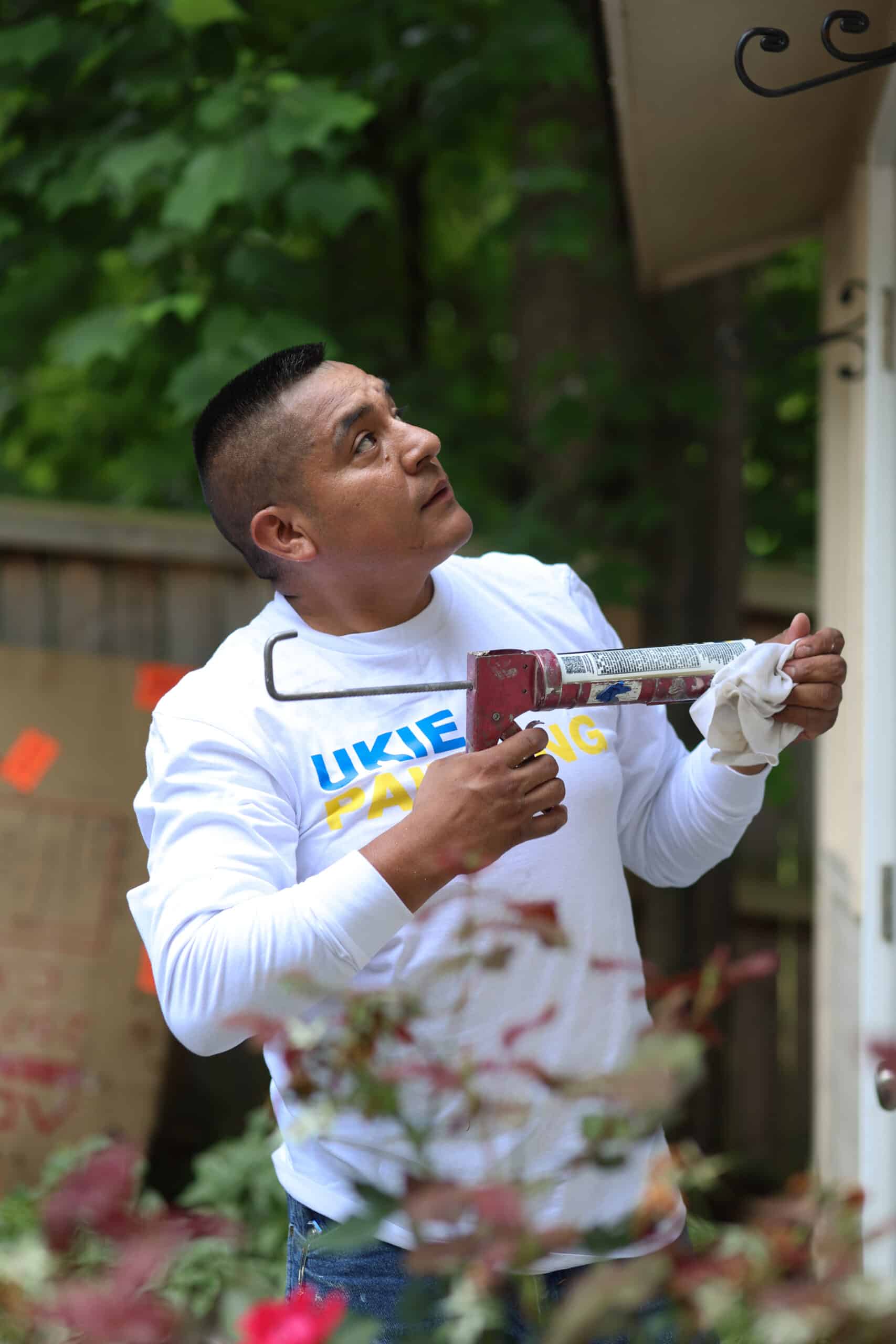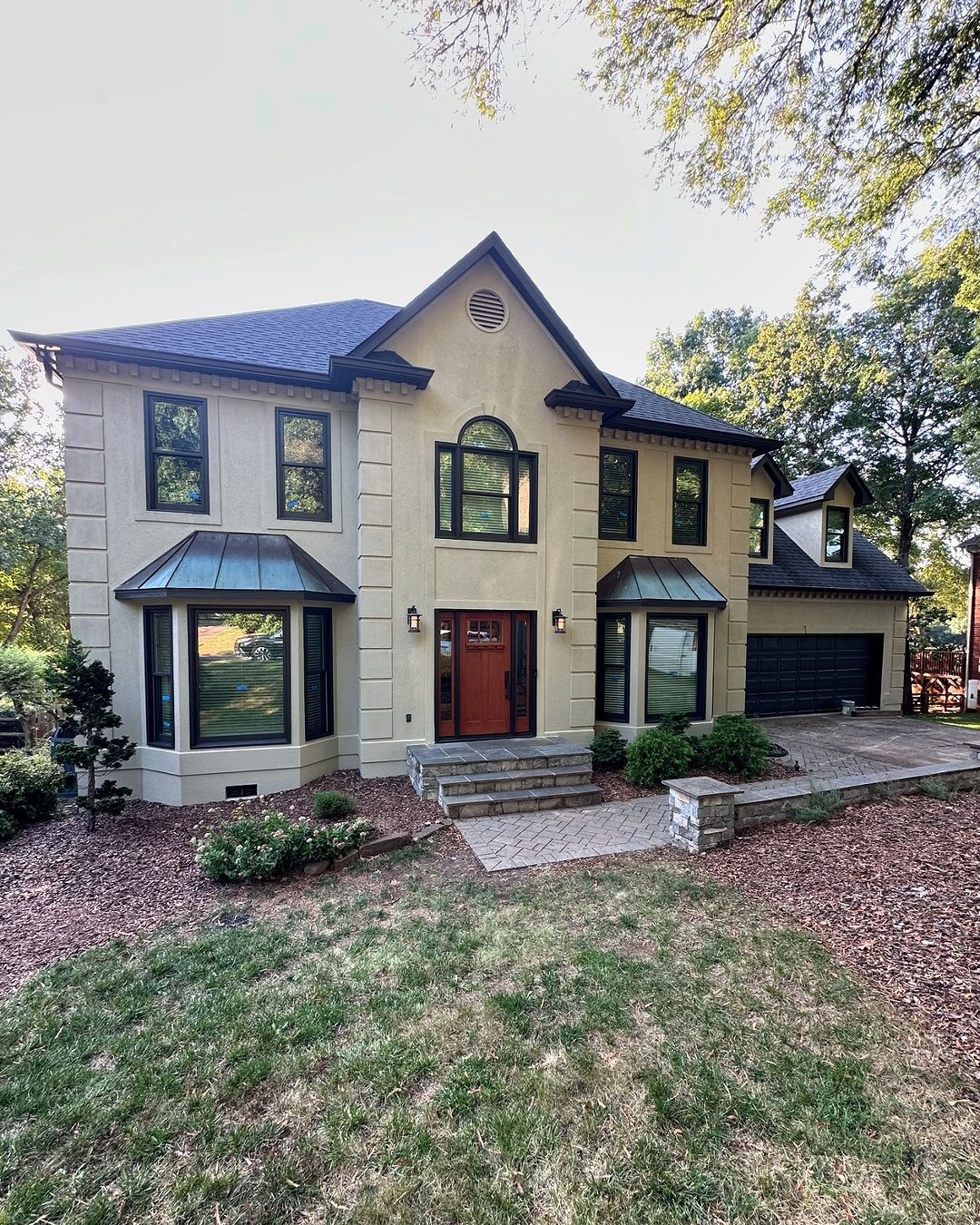A painting contract is far more than a piece of paper—it’s your legal protection, a roadmap for quality, and your best defense against budget overruns or warranty disputes. Too many disagreements stem from contracts that gloss over crucial details or leave terms vaguely defined.
Whether you’re repainting a commercial facade, multi-unit HOA, office space, or personal residence, this guide equips you to evaluate painting contracts with expert precision.
Why a Clear Painting Contract Matters

It Defines the Scope and Limits Disputes
A precise scope—like knowing you’re getting two coats of Sherwin-Williams Duration Exterior Satin on stucco—aligns expectations and reduces arguments over change orders, unpriced add-ons, or hidden fees. According to the Arbitration Foundation of America, poorly specified painting contracts contribute to 70% of service industry disputes.
It Legally Binds the Painter to Standards
Handshakes don’t carry weight in court. Only clear, written terms—such as “all peeling paint scraped to sound substrate” or “adhesion ≥ 350 psi using ASTM D3359—Class 4B testing”—are enforceable.
It Helps You Compare Quotes Accurately
When all quotes reference identical product lines and scope details, your bid comparisons are apples-to-apples. Differences in brand, coat count, or prep steps become clear and quantifiable.
Key Elements Every Painting Contract Should Include
Contractor Information
Look for the company’s legal name, license number, registered address, and designated point of contact. For example, Californian painting contractors must display their CSLB license on all advertisements per Business and Professions Code § 7031.5.
Property and Project Description
It should list the exact property address and describe precisely what’s included—e.g., “Exterior siding, trim boards, window frames, and handrails to be painted; shutters not included.”
Detailed Scope of Work
Expect the painting contract to outline:
-
Surface preparation:
-
High-pressure wash (2,000–3,000 psi) using non-bleach mildewcide solutions (e.g., Jomax).
-
Scraping peeling paint, sanding edges to feather-out visual transitions.
-
Cleaning surfaces to be free of chalk, dust, oil, and mildew.
-
-
Caulking and patching:
-
Replace damaged caulk with DAP Dynaflex 230 or OSI Quad Max.
-
Fill minor stucco cracks using elastomeric patch products like Loxon XP Crack Filler.
-
-
Priming:
-
Apply high-adhesion primer sealer (e.g., Sherwin-Williams Loxon Masonry Primer or Zinsser Cover Stain) on bare wood, bare stucco, or patched areas.
-
Specify one full coat, not “as needed.”
-
-
Coating:
-
Apply two uniform coats of specified paint, whether that is Benjamin Moore Aura Exterior on wood, or PPG Break-Through DTM on metal.
-
This level of clarity ensures you know exactly what you’re paying for.
Product and Material Specifications
Paint Brand, Line, and Sheen
The contract should list the exact product—e.g., “two coats of Sherwin-Williams Duration Exterior Satin.” Generic terms like “premium paint” or “high-grade coating” give no guarantee of quality.
Primer Details
Primer is critical for durability and color performance. Mandate precisely: “one coat of Loxon Masonry Primer on all stucco” or “Zinsser Cover Stain applied to bare wood.” This ensures coating adhesion and warranty compliance.
Color Selection Process
Establish how many unique colors are included, and how they will supply leftover touch-up cans (minimum of 8 oz, labeled).
VOC and Environmental Specs
If your building is near a school, healthcare facility, or contains indoor air quality needs, require low- or zero-VOC product lines, like Benjamin Moore Natura or Sherwin-Williams Harmony. Ask if they meet CA, NY, or MA VOC limits (e.g., 50 g/L for flat, 150 g/L for non-flat paints).
Payment Terms and Billing Structure
Painting contracts typically use pay-as-you-go terms:
| Stage | Industry Standard |
|---|---|
| Deposit | 10–30% before work begins |
| Progress Payment | 40–60% at mid-point based on measurable milestones |
| Final Payment | 10–25% upon completion and final site inspection |
Red Flags
-
Large deposits beyond 50%
-
“Cash-only” or untraceable payments
-
No tie between payment and defined work completion
Retainage Option
Holdback of 5–10% of the total allows you to ensure all punch-list items are resolved before final payment—the industry best-practice approach.
Timeline and Project Duration
Must-Haves
-
Start and end dates (e.g., July 10–July 21, weather permitting).
-
Define workdays and hours. For example: “Crew allowed on-site from 7 am to 5 pm weekdays; weekends only if pre-approved.”
Schedule Contingencies
Include language such as: “Timeline will adjust for rain delays exceeding 0.1” in any calendar day.”
Insurance, Licensing, and Permits Clause
Minimum Requirements
All contractors should carry:
-
General Liability – minimum $1 million per occurrence.
-
Workers’ Compensation – per state law for employees.
-
Auto and Umbrella – if applicable, depending on project scope.
Permits
Painting contract does not always include permit pull; clarify who handles these responsibilities and costs, particularly for commercial or institutional work requiring signage or scaffolding permits.
Warranty Terms and What They Cover
Workmanship Warranty
A minimum one-year written guarantee covering peeling, blistering due to application error—typically excluding structural movement, water intrusion from leaks, or vandalism.
Product Warranty
Paint manufacturers like Sherwin-Williams and Benjamin Moore offer 5–15-year warranties, but subject to correct application per their Technical Data Sheet (TDS). Ask if they will register the warranty and whether it is transferable to future property owners.
Change Orders: Handling Mid-Project Adjustments
Typical Triggers
-
Discovery of wood rot, rust, lead paint
-
Unexpected substrate conditions
-
Additional surfaces added after job start
Essential Process
-
Written change orders required before work begins
-
Include itemized description, additional time, and cost impacts
-
Both parties must sign before execution
Cleanup and Waste Disposal Clause
Should Include
End-of-day cleanup, with proper disposal of paint chips, masking materials, and safe handling for hazardous wastes (e.g., oil-based paint). A reputable contractor typically includes roll-out drop cloths and HEPA vacuuming protocols for controlled dust cleanup.
Dispute Resolution and Painting Contract Exit Clauses
Goals
-
Define termination rights with cause and non-cause exit
-
Provide mediation/arbitration clauses
-
Permit withholding of final payment for performance deficiencies
These provisions protect you from painting contractors walking off mid-job or underperforming without recourse.
Red Flags to Watch For
| Red Flag | Why It Matters |
|---|---|
| “Prep as needed” | No guarantee of thorough preparation |
| No product brand or sheen | Might result in lower-quality paint choices |
| No warranty terms listed | Leaves you with little protection in case of failure |
| Cash-only or large upfront | Common with unlicensed or fly-by-night operators |
| No cleanup clause | Leaves you with potential cleanup responsibilities |
Product-Specific Vetting Questions
-
Surface-specific systems – Ask: “Which coating system do you propose for stucco vs wood vs metal?” Good answers mention Loxon XP, Superior Exterior, or Aura rather than vague terminology.
-
VOC considerations – Ask: “Can you confirm compliance with our city’s VOC limits?” — Look for definitive references to specific low-VOC products like Harmony or Natura.
-
Special coatings – Ask: “Do you have experience using anti-graffiti or elastomeric coatings for crack repair?” Contractors should name commercial-grade products like Sherwin-Williams Anti-Graffiti Clear or Loxon XP Elastomeric.
What Happens If You Skip These Checks?
Legal and Financial Exposure
No insurance + injured painter = liability falls to you.
Unlicensed work can lead to building violations, fines, or insurance denial if damage occurs later.
Invoice disputes are harder to enforce without clear painting contract terms.
Quality Risks
Inadequate prep leads to blistering, mildew, or uneven finish.
Incorrect coatings can void paint warranties.
Deferred surface cleanup can degrade curb appeal and increase maintenance costs.
Expert Tips for Smart Painting Contract Management
-
Include your credential checklist in your RFP—disqualify bidders who won’t comply.
-
Require line-item pricing to see where money is spent (prep, paint, labor, protection).
-
Reject bids without clear schedule or milestones—unknowns mean risk.
-
Re-verify all documentation before start—licenses and insurance can lapse during delays.
Bonus Table: Side-by-Side Painting Contract Breakdown
| Contract Section | Example Expectation |
|---|---|
| Scope of Work | “Power-wash 2,500 psi, scrape edges, prime bare stucco with Loxon Primer, apply two coats of SW Duration Exterior Satin” |
| Materials | “Primer: Zinsser Cover Stain; Topcoat: Benjamin Moore Aura Exterior Satin; Colors: 3 tones” |
| Payment | “Deposit 25%, milestone 50%, final 25% after sign-off” |
| Warranty | “5-year workmanship warranty, 15-year product warranty, both in writing” |
| Schedule | “Start July 10, complete July 21; rain schedule included” |
| Change Orders | “All additional work must be signed by both parties before proceeding” |
| Cleanup | “Daily debris pickup and final site cleaning; proper hazardous material disposal” |
| Insurance & Licensing | “Proof of GL insurance $1M+, workers’ comp, active state license on file” |
Product Guide: Frequently Specified Expert Paint Systems
-
Sherwin-Williams Duration Exterior Satin –
Feature-rich: 100% acrylic, moisture-resistant, exceeds ASTM D2486 scrub test by over 5K cycles. Ideal for durable, fade-resistant finish. -
Benjamin Moore Aura Exterior –
Self-priming, cross-linked acrylic binder, high coverage. Known to surpass QUV testing of over 3,000 hours for fade resistance. -
PPG Break-Through DTM Primer/Finish –
Direct-to-metal alkyd/acrylic hybrid that meets ASTM D3359 adhesion Class 4B and is ideal for steel or aluminum. -
Sherwin-Williams Loxon XP Elastomeric Primer/Coating –
Elastomeric resin stretches up to 300%, crack-bridging, water-proofing—tested under freeze-thaw cycles and high moisture.
To Sum It Up
A painting contract should do more than list dates and dollars—it should cover preparation, product specifications, warranty obligations, clean-up procedures, and how disputes are handled. When you drill down into each section, request specific brands, confirm insurance coverage, and understand how change orders are managed, you elevate the painting contract from a bid sheet into a project roadmap—and insurance policy.
Take the time to read, review, and question ambiguity. Reputable contractors embrace transparency. Those who resist should raise red flags.
Your property, schedule, and wallet deserve clarity—now and down the road.





